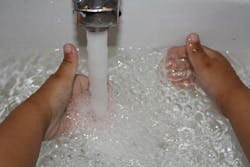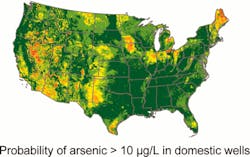Arsenic in tap water could affect 2 million in the US
WASHINGTON, DC, OCT 20, 2017 -- More than 44 million people in the U.S. get their water from private domestic wells, which are largely unregulated. Of those, a new report estimates that about 2 million people could be exposed to high levels of naturally occurring arsenic in their water. The study appears in ACS' Environmental Science & Technology.
Municipal water-treatment systems can filter arsenic out, but monitoring and mitigating contaminants in well water is up to private owners. The American Chemical Society reports that Joseph D. Ayotte and colleagues at the U.S. Geological Survey and the U.S. Centers for Disease Control and Prevention wanted to map well-water arsenic levels to determine the risk in the U.S.
The researchers developed a model incorporating tens of thousands of existing arsenic measurements from wells across the U.S. They also considered factors that affect arsenic concentrations, including regional rainfall, geology and aquifer chemistry. The model identified arsenic hotspots where wells would likely have levels of arsenic higher than 10 micrograms per liter, the threshold concentration set by the Environmental Protection Agency as the maximum contaminant level. Based on these findings, the study estimated that the affected wells serve about 2.1 million people, many of whom might be unaware of the potential health hazard. The takeaway, researchers say, is that all private well owners should test their wells for arsenic.
Read more here.

